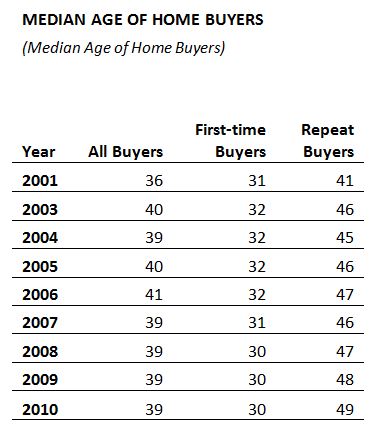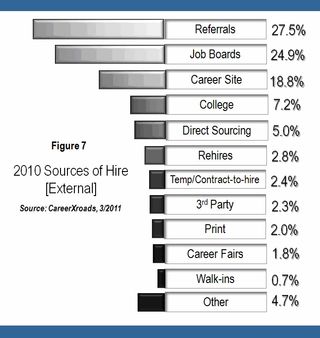In the last edition I summarized comments from several of you regarding the dilemma of whether to concentrate efforts on hiring older (38+ yrs) or younger (21-35 yrs) agents. Everyone agrees that there needs to be diversity in age represented, but there are definitely strong opinions that are approximately split down the middle, with a slight edge in the favor of focusing most of one's efforts on younger agents.
Being a relatively new observer of this industry (five years), I may need your help deciphering the core logic behind these stances, but let me take a whack at it…
Much of the discussion may hinge on the differences in the model pertaining to the actual work of the agent. That is: What makes someone successful? This difference can be deeply ingrained (perhaps rightfully so) and represents the historic culture of the organization; including the hiring, the training, the tools, the systems, the managers, and perhaps even the expectations, as well as the culture of your region.
One side can be described as the more traditional model. The traditional model is clearly a networking strategy. The networking strategy relies heavily on the circle of influence, and as such, requires that agents have a large circle of influence with individuals who want to buy or sell homes. An extension of this belief is that the optimum age preference for this group would probably be 35-55. The further belief, is that from within this group, it is much easier to choose a top performer, as they come with a proven track record of success or have raised their children well, while coaching soccer, running the PTA and serving on their local church board of elders.
The other side is focused on developing and training new talent. This side appears to want to simultaneously shape the younger talent into the habits around systems that they want to instill, while encouraging this group to connect with their generation in ways that are innovative and fits their style and geographic region. This side wants to capitalize on the e-lead innovations and social network strategies.
Both models, if executed with clear dedication, probably work well. But, in my opinion, we must consider the home buyer. What do they want? What a home buyer wants in the Midwest may be different than what a home buyer wants on the west coast. I know, when we studied a company in Seattle, there were clearly both types of agents working: Traditional and E-Lead. The CCI assessment captured and defined both profiles among their top performers. This market demanded both.
But, what if we assume for a moment (as some do), that buyers want to deal with someone in their age bracket?
Here are some facts from the American Housing Survey (AHS):
- The typical age of home buyers has remained at 39 years of age since 2007.
- However, when looking closer there are differences among first-time home buyers and repeat home buyers.
- The age of first-time home buyers fluctuates with household affordability. From 2003 to 2006, during the housing boom, younger buyers had a more difficult time entering the market and the typical age rose to 32. In 2007, the typical age of first-time home buyers fell to 31, and from 2008 to 2010 the typical age has remained at 30.
- Among repeat buyers the story is different. When many markets became buyer’s markets, current home owners stayed in their homes longer, putting off selling and moving to a different home. This affected not only tenure in home, but the typical age of repeat buyers. Repeat buyers increased in age steadily on an annual basis from 41 in 2001 to 49 in 2010.
 The youthful section of this chart seems to dictate that at the very least one should seriously consider hiring a representative sample of younger agents. In fact the "median" never really tells the story like the average does. Dig deeper and you find that two-thirds of the first time householders were under age 35 while less than 5 percent of these householders were over age 55.
The youthful section of this chart seems to dictate that at the very least one should seriously consider hiring a representative sample of younger agents. In fact the "median" never really tells the story like the average does. Dig deeper and you find that two-thirds of the first time householders were under age 35 while less than 5 percent of these householders were over age 55.
But here is another thought. Allow me to kick around an idea… What if there is an entirely different model for training the next generation of agents? What if there is a model where age doesn't matter…where only talent, eagerness, willingness to learn, motivation and execution matter? I have a 26 year old son who sells in an industry where he is calling on and selling to much older adults. In addition, one of his 28 year old friends sells business insurance. Both young men are very successful, selling to much older adults. The list can go on… Pharmaceutical sales people are usually young and call on doctors, who may be much older.
Or consider 25 year old Josh Flagg and his young, very successful Realtor buddies who are featured in "Million Dollar Listing" on the Bravo network. He can't relying solely on circle of influence.
Why does the Real Estate Industry generally ignore this age group?
One of the complaints that has been shared with me regarding hiring younger people is that they have no savings to rely on to get them through the first few months. The argument is that, "Older adults have more financial stability to get started." They say, "There isn't a proven track record…"
But, where older adults also have a mortgage, insurance, car payments, kids to support, and expensive habits, young people have little of this, young people can live with their parents or don't mind living in a dump to get by temporarily. Historically, in most professions outside of real estate, young people have more tolerance for risk, more energy and motivation, fewer fears, and need less security.
These are just thoughts that were stirred up from the discussion. But I urge you to be thinking about the following: Is there something about the traditional real estate mentality that seems to miss out on capturing the imagination of this group? Is there something about the average real estate manager that doesn't appeal to the best and brightest young people?
Here is my usual and customary belief about all industries: The brightest talent does exist in all age groups. And when you get them, they'll succeed. The question is… are you set up to attract and keep them?
Editor's Note: This article was written by Dr. David Mashburn. Dave is a Clinical and Consulting Psychologist, a Partner at Tidemark, Inc. and a regular contributor to WorkPuzzle. Comments or questions are welcome. If you're an email subscriber, reply to this WorkPuzzle email. If you read the blog directly from the web, you can click the "comments" link below.















